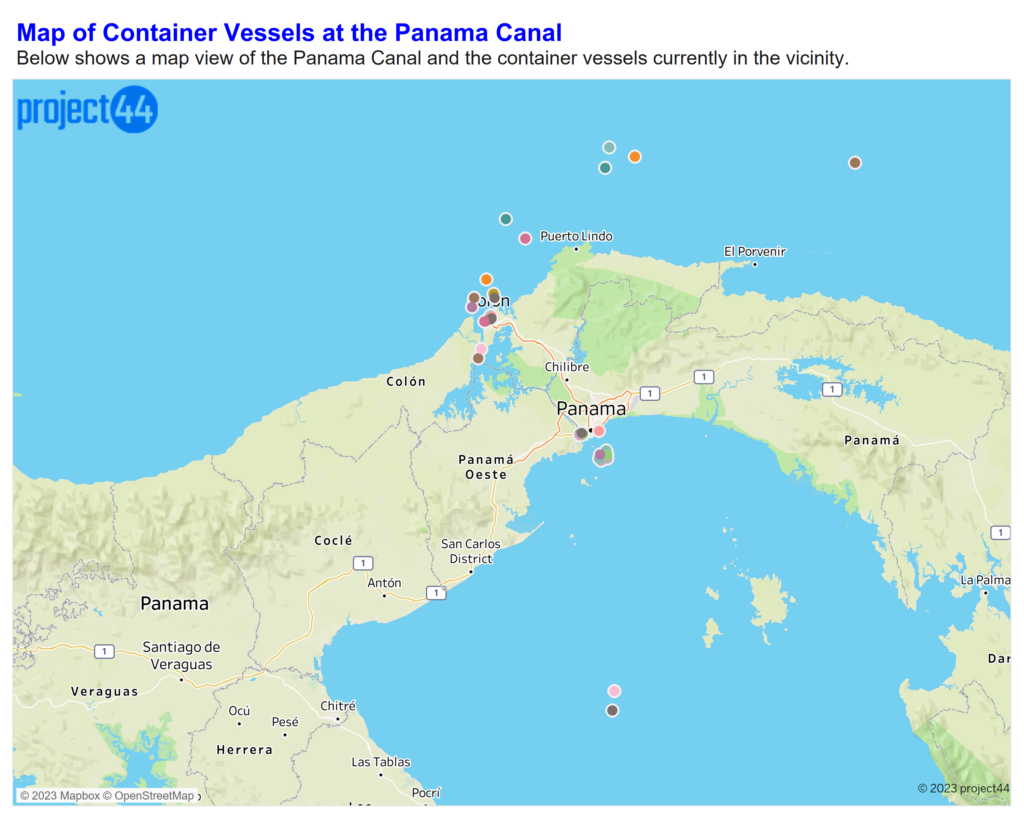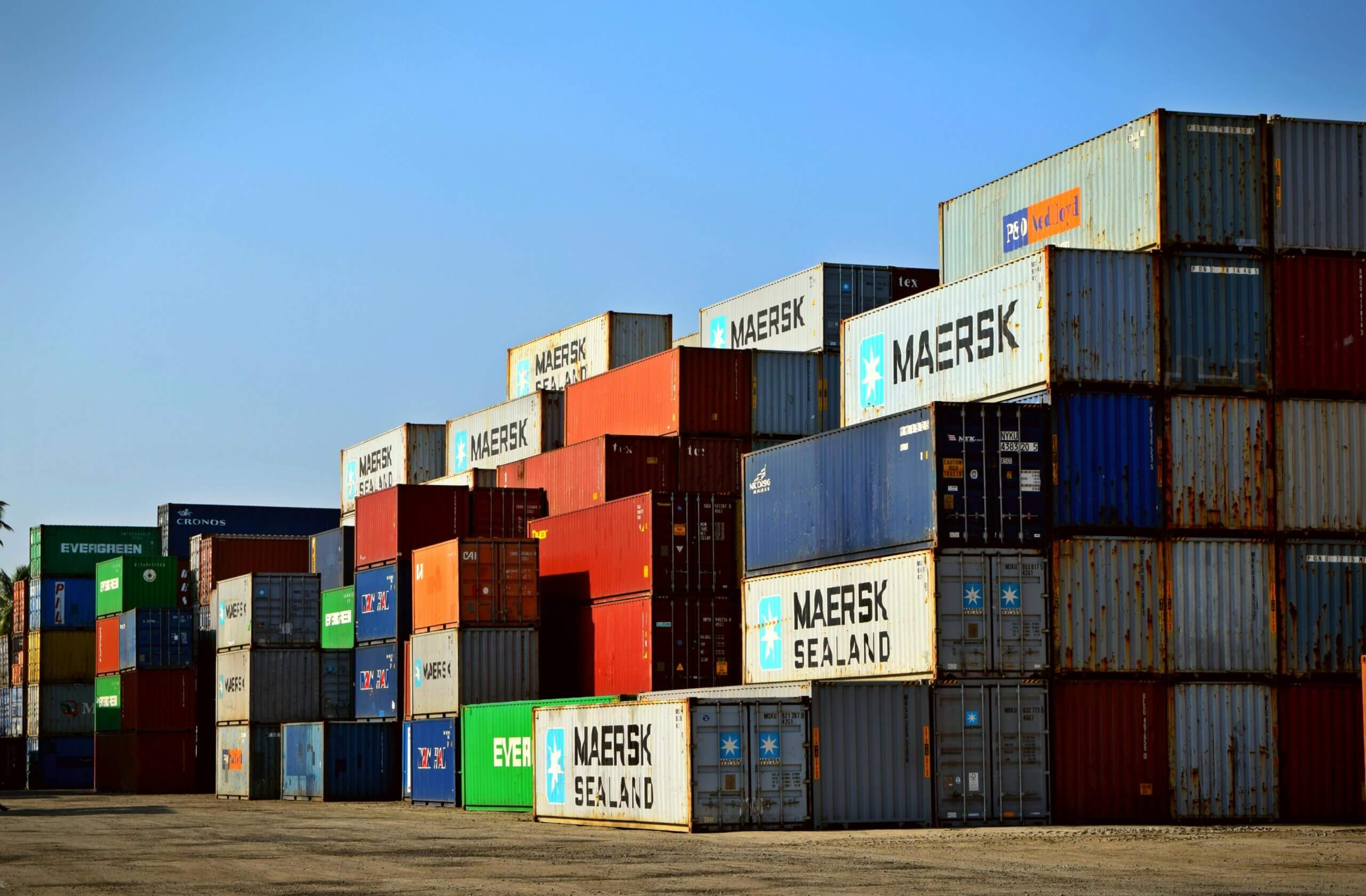Panama Canal Drought Impacts
The droughts persist in the Panama Canal region, with previously imposed restrictions on vessel capacity and draft set to extend for another 10 months. Capacity has dwindled from roughly 36 vessels per day transiting the canal to 32. Additionally, the vessels allowed to pass through must adhere to a draft limit of 13.4 meters, a decrease from the previous limit of 15.2 meters.
The map below shows container vessels congregating around the canal waiting for passage.

Although there is evident dwell time and increased lead time for canal passage, it’s important to note that these effects aren’t uniform across all carriers. The chart below illustrates the average time required for different carriers to navigate the canal.

While it may appear that the Panama Canal is displaying preferential treatment towards specific carriers, the root cause of varying impacts on carriers lies elsewhere. Sources with insights into the Panama Canal Authority have clarified that the primary customers of the canal experience fewer disruptions because they maintain regular communication with the canal. These shippers are taking proactive measures by scheduling appointments for passage, in contrast to carriers less accustomed to the route, who arrive without appointments and consequently must wait for an available slot.
According to Panama Canal statistics, the wait time for non-booked vessels passing through the canal has increased an astounding 280% since June, going from an average of approximately 2.5 days to an average of approximately 9.5 days. Prior to the restrictions, booking was not a huge differentiating factor in dwell time, but with the restricted capacity these vessels have been the most heavily impacted.
Outlook
As the drought persists and restrictions remain in force, effective communication between carriers and the port becomes paramount for smooth transits through the Panama Canal. Shippers who proactively schedule appointments and maintain robust communication channels with the canal experience significantly fewer disruptions compared to those who infrequently use this route. The vessels that are most impacted by the new restrictions are non-booked, so shippers should be proactively booking vessels planned to pass through the canal.
For questions or comments:
press@project44.com
Disclaimer: The information conveyed herein, shared solely for summary and not contractual purposes, comes from both project44 and third-party reporting. The project44 data does not include all available market information, and project44 has not undertaken to independently verify the third-party reporting. Similarly, this type of data changes from day-to-day. Accordingly, the reader should not rely on this reporting to make any business decisions, and project44 expressly disavows any liability arising from any such reliance.



